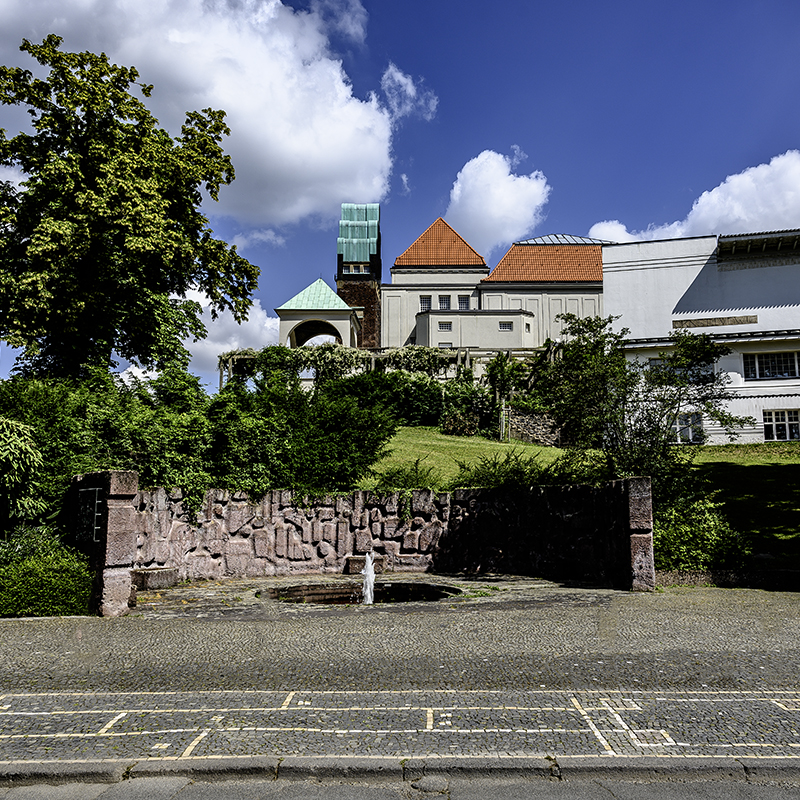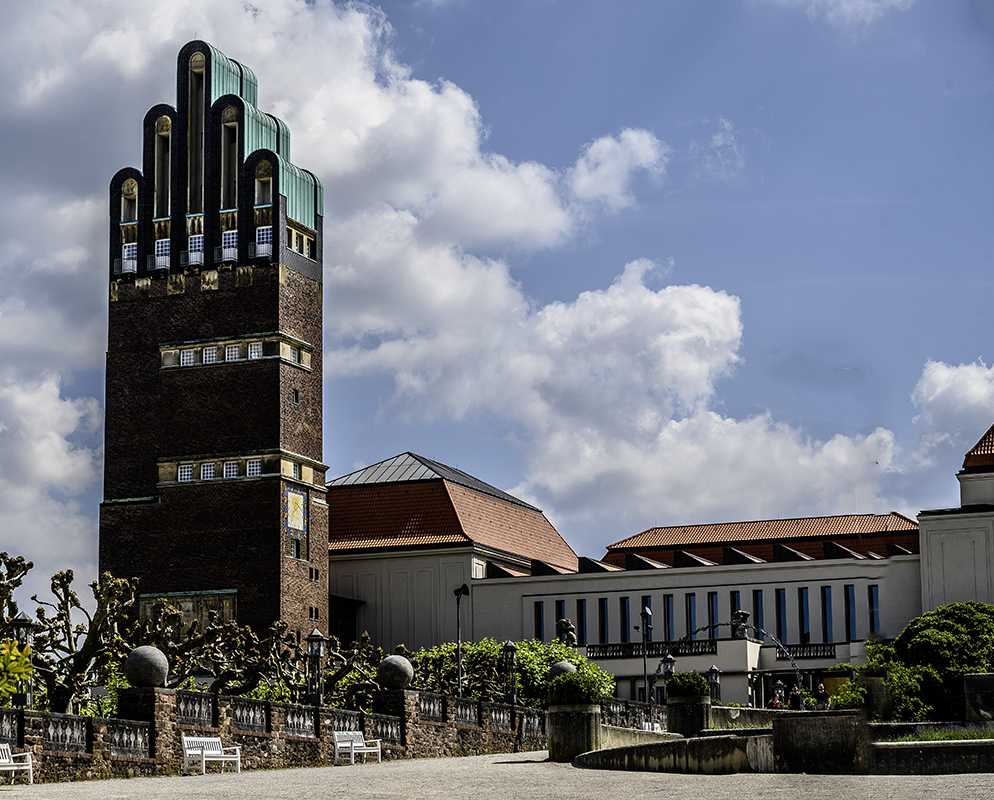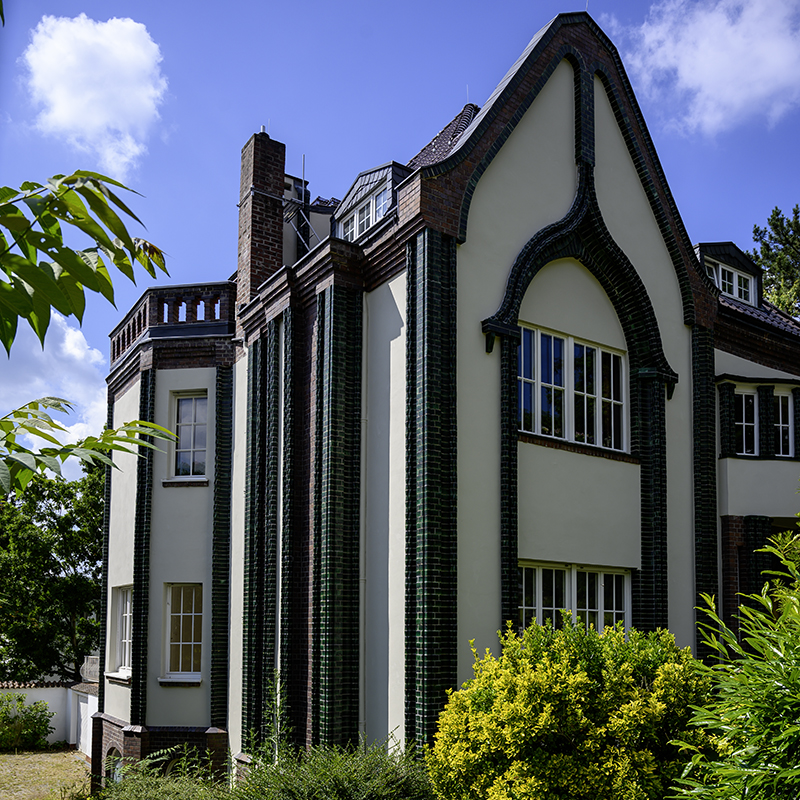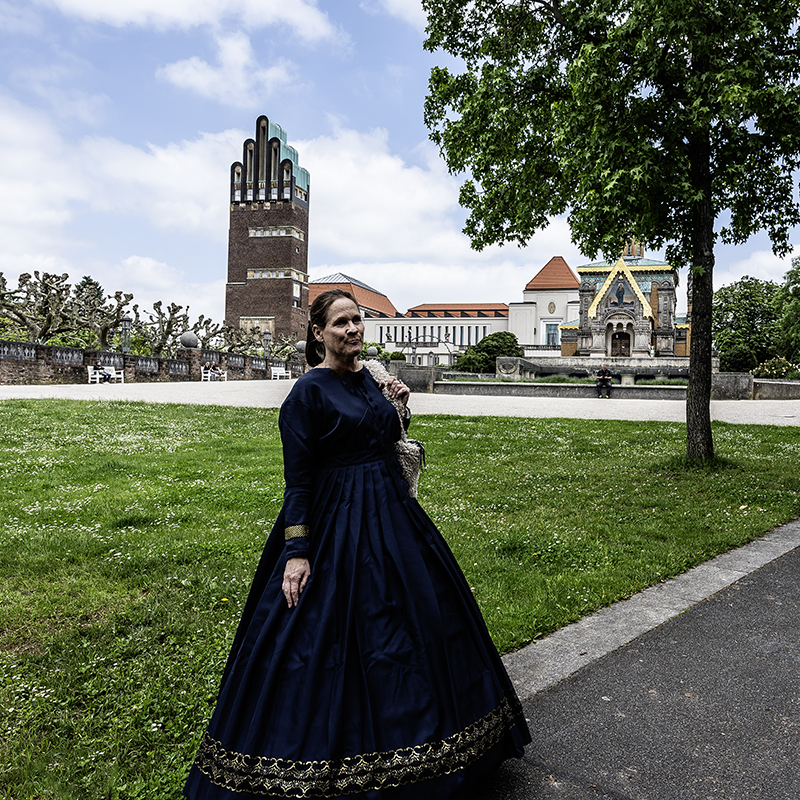
Art, Blue Blood And Medicine
Mathildenhöhe
Highlight
Produced by :  © 2024
© 2024


Produced by :  © 2024
© 2024

The Mathildenhöhe Institute in Darmstadt is celebrating the reopening of the extensively renovated exhibition building with a special exhibition on Darmstadt's artistic landscape.
Paintings, sculptures, graphic works, photographs and video art from the Darmstadt Municipal Art Collection review historical events in the city and present extraordinary people who have lived and worked in Darmstadt. A focus is placed on some works by female artists that have never been exhibited before and are waiting to be discovered.
The exhibition tour develops into a journey through 200 years of history of the art city of Darmstadt and its immediate region.
The Mathildenhöhe World Heritage Site has always been an international attraction for contemporary art. In 1908, the fine arts of the time were presented at the opening of the building. In 1920, an exhibition on Expressionism was held with around 1,000 works of international significance. Now the public will be able to take another look at the city's art treasures with a three-day opening ceremony from September 20 to 22, 2024.

Mathildenhöhe in Darmstadt is a place where European aristocracy, medicine, fine and applied arts meet. The striking exhibition building with its wedding tower, the Museum Künstlerkolonie and the Darmstadt Municipal Art Collection have made this hill an exceptional place for the exploration, presentation and communication of art and culture since 1900.
In 2021, the Mathildenhöhe in Darmstadt was added to the UNESCO World Heritage List.

At the suggestion of art publisher Alexander Koch, Grand Duke Ernst Ludwig appointed the seven Art Nouveau artists Peter Behrens, Paul Bürck, Rudolf Bosselt, Hans Christiansen, Ludwig Habich, Patriz Huber and Joseph Maria Olbrich as patrons of the newly founded artists' colony in 1899. Under the motto "My Hessenland flourishes and in it the art", he expected an economic revival for the Grand Duchy of Hesse from a combination of art and crafts. The aim of the artists was to develop modern and forward-looking forms of building and living.

In August 1914, at the outbreak of World War I, the current exhibition at the Mathildenhöhe was discontinued. The artists' colony continued to exist during the war, but there were no more new appointments of artists. The abdication of the Grand Duke in 1918, at the latest, effectively sealed the end of the artists' colony. It was then formally dissolved in 1929. Despite the short duration of its existence and the destruction during the World War II, the artwork of the artists' colony and architectural delicacies on the Mathildenhöhe, such as the Behrens House, represent a lasting highlight of Darmstadt's cultural heritage.

Alice is the second daughter of Queen Victoria. From 1863, she became involved in public health care and improving the hygienic conditions for women who had recently given birth. In 1867, together with Luise Büchner, she founded the Sick and Poor Care Association (Alice Women's Association) in Darmstadt, named after her. The two women developed the profession of nursing without denominational ties.
The Darmstadt-born painter Paul Weber was hired as court painter. Alice takes painting lessons from him. She plans to set up an artists' colony in Darmstadt. She was no longer able to carry this out herself, as she contracted diphtheria from her children and died on 14 December 1878.
Her son, Grand Duke Ernst Ludwig, realized his mother's plan by building the Mathildenhöhe.
In 1910, the mortal remains of Grand Duchess Alice and Princess Marie were transferred to the New Mausoleum of the Grand Ducal Family in the Rosenhöhe Park in Darmstadt.
Princess Alice of Great Britain and Ireland Grand Duchess of Hesse and by Rhine (Sonja Kargel) takes us to the place she wanted to create and gives the introduction to her legacy, which has now been declared a UNESCO cultural heritage site.

The 1960s saw the emergence of a new artists' colony. From 1965 to 1967, seven studio and residential buildings were built in Rosenhöhe Park according to plans by Rolf Prange, Rudolf Kramer, Bert Seidel, Heribert Hausmann and Reinhold Kargel.
Rosenhöhe Park is a remarkable place for Darmstadt: quiet, covered with plants, flowers and ponds where the frogs make a lot of noise. - So it's not just high culture, annoying cyclists and hi-tech, but also relaxation and nature very close to the city.